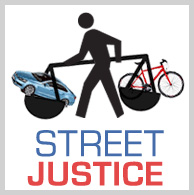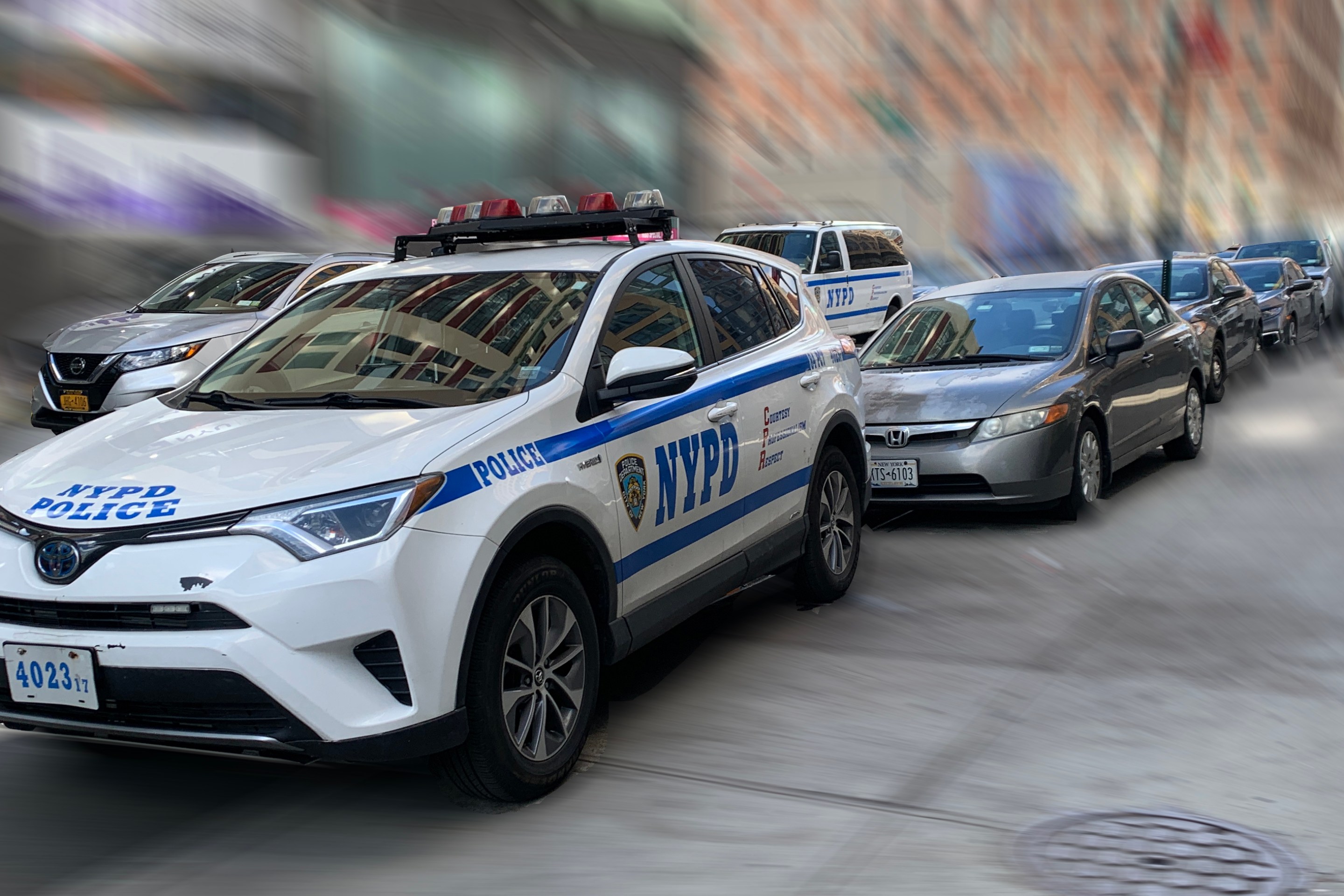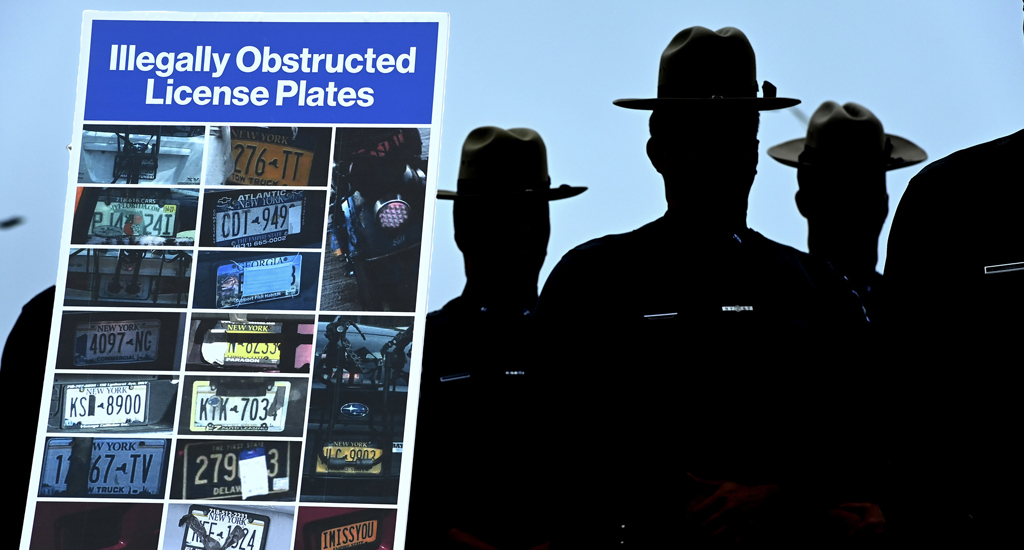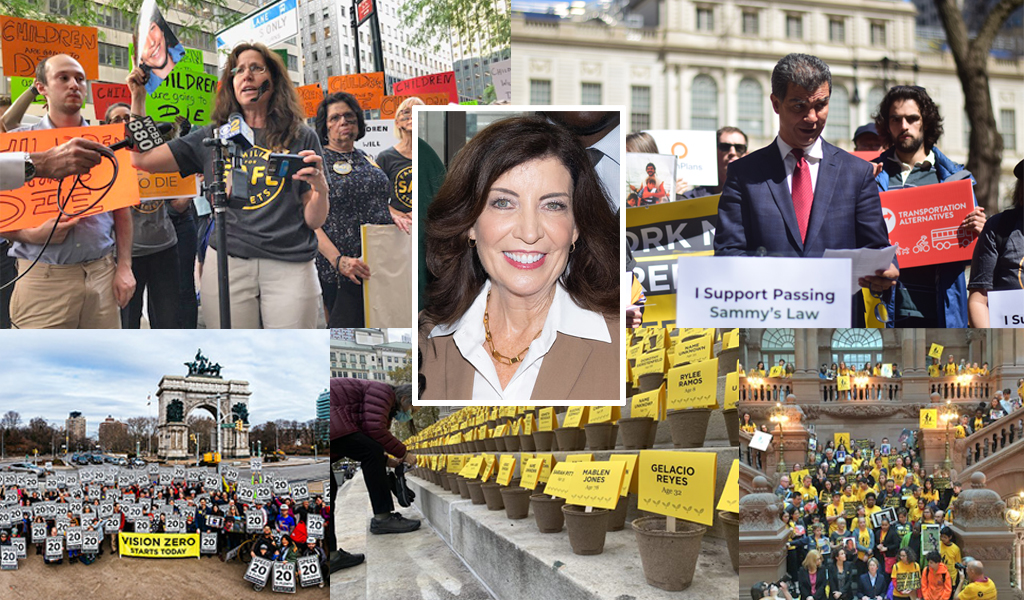How the City Council Can Impose Tougher Penalties on Reckless Drivers
1:07 PM EST on November 19, 2013
The election of numerous safe streets candidates earlier this month, followed by the exoneration of road-raging cabbie Faysal Himon and the gut-wrenching parade of daily traffic deaths since, create the best opportunity in years to impose meaningful consequences for sober reckless driving.
I have been told by numerous lawyers with state legislative experience that only Albany can tinker with criminal penalties for reckless driving. But I’m not sure that’s true. Outlined below is the case for legislative reform, the authority of the City Council to enact reform, and a proposed bill reflecting what reform should look like.
Why New Laws Instead of Better Enforcement of Existing Laws? Before putting new laws on the books, better to first ask whether existing laws are adequate to punish and deter sober reckless driving. New York State Vehicle and Traffic Law (VTL) Section 1212 -- entitled "Reckless Driving" -- would seem to fit the bill. It reads:
Reckless driving shall mean driving or using any motor vehicle, motorcycle or any other vehicle propelled by any power other than muscular power or any appliance or accessory thereof in a manner which unreasonably interferes with the free and proper use of the public highway, or unreasonably endangers users of the public highway. Reckless driving is prohibited. Every person violating this provision shall be guilty of a misdemeanor.
Pretty good, huh? The statutory text requires only that a driver "unreasonably interfere with" or "endanger" another person to be guilty. The offense is classified as a misdemeanor, creating criminal penalties for reckless driving.
Isn’t the answer simply to vigorously enforce this law? No, for three reasons:
- Despite the clear "causing unreasonable danger/interference" standard spelled out in the statutory text, courts applying it have seized on the word "reckless" in the title of the statute and used it as a reason to smuggle in the entirely foreign penal law concept of recklessness, which requires a finding that the driver “grossly deviated” from "reasonable" conduct. This is a much harder thing to prove, as the Court of Appeals held in People v. Cabrera.
- Even if a “gross deviation” demonstrating recklessness is found, VTL 1212 does not specify a penalty, and so the default penalty for unclassified misdemeanors applies -- a maximum of 30 days in prison and $300 fine.
- In practice, it is commonplace for judges hearing reckless driving charges to offer the driver an “adjournment in contemplation of dismissal” (ACD) which allows the driver to avoid prison time and a criminal record.
If you have the pleasure of receiving a summons to criminal court for cycling on a bike path or talking back to a cop, you will watch a handful of drivers who received reckless driving charges get off with an ACD and a fine of $100 to $200 (sidewalk cyclists are usually offered, and often take, the same ACD deal with a $50 fine). For a driver who injures or kills a vulnerable street user, an ACD plus a $200 fine is not meaningful punishment or deterrence.
Accepting as true that it is extremely difficult to win legislative reform of traffic laws in Albany, what can city government do?
NYC’s Authority to Regulate Traffic. New York State has an interest in uniformity of traffic laws throughout the state, to ensure the smooth flow of commerce and non-commercial travel. But certain aspects of traffic regulation implicate peculiarly local concerns. The state legislature accordingly has granted limited authority to local governments to regulate certain aspects of traffic.
There is a special grant of broader authority for cities with a population of greater than one million, which gives New York City lawmakers an even freer hand to regulate local traffic. The specific terms of that grant provide that New York City “may by local law … prohibit, restrict or regulate traffic on or pedestrian use of any highway … .”
“[S]uch local laws…shall supersede the provisions of [the New York State Vehicle and Traffic Law] where inconsistent or in conflict with respect to the following enumerated subjects: … “10. the right of way of vehicles and pedestrians … .”
This grant of authority to regulate “the right of way of vehicles and pedestrians” encompasses matters such as appropriate penalties for sober reckless drivers.
NYC’s Authority to Impose Criminal Penalties for Traffic Offenses. Section 1800 of the VTL provides that "it is a traffic infraction for any person to violate any of the provisions of this chapter or of any local law, ordinance, order, rule or regulation adopted pursuant to this chapter, unless such violation is by this chapter or other law of this state declared to be a misdemeanor or a felony."
Only felonies and misdemeanors are classified as "crimes" -- traffic infractions are not. The seemingly semantic distinction has enormous real-world consequences, because police officers are generally far more motivated to enforce criminal laws than to issue summonses for traffic infractions. Once "criminality is suspected," the entire law enforcement system takes a traffic offense more seriously.
Although VTL Section 1800 might mean that the City Council cannot declare new traffic misdemeanors, once a traffic offense is classified as a misdemeanor under the VTL, the city can enhance the penalties for offenders. The clearest example of this is NYC Administrative Code Section 10-163, which outlaws drag racing.
Back in 2004, the problem of drag racing on Francis Lewis Boulevard drew the attention of the New York Times (and City Council Member Mark Weprin). The council found that even though the VTL defined drag racing as a misdemeanor, the penalties were "inadequate" -- no more than 30 days in jail and a $500 fine. Given the extraordinary dangers of drag racing in a crowded urban environment, the City Council enacted its own “homegrown” anti-drag-racing misdemeanor with an increased penalty.
The council’s statement of legislative findings and intent reads: "[T]he City Council finds that engaging in drag racing or actively participating in a drag race, particularly within the congested environs of New York City, warrants an increased penalty" of up to six months imprisonment and a $600 fine.
The council apparently also thought the definition of "drag racing" in the VTL was too limited. The council’s legislation superseded the narrower definition in the VTL and replaced it with a far broader definition -- including a number of "actions and circumstances" that do not even constitute operation of a motor vehicle, such as:
[A]ctions or circumstances that reasonably indicate that a race, exhibition or contest of speed has occurred or is imminent, including, but not limited to, the presence of a canister appearing to hold nitrous oxide attached to a vehicle; an explicit invitation to race; a starting or ending point marked in some way; the wagering on the race's outcome; the operation of a motor vehicle in a manner where the operator, in competition, accelerates at a high rate of speed; the raising of a vehicle vertically; the spinning of the vehicle rapidly in a circle.
The City Council’s decisive action in 2004 to enhance criminal penalties for drag racing, and to broaden the definition of the offense to include specified actions and circumstances indicative of recklessness, provides a clear path for legislating enhanced and surer penalties for other forms of reckless driving.
Proposed below is draft legislation for purposes of discussion. I was informed by Council Member Weprin’s office that the approach outlined in this post holds promise, and that Weprin is working on a bill that will rely on the City Council’s legislative authority to create meaningful consequences for sober reckless driving.
Proposed Amendment to New York City Administrative Code
Reckless Driving
(1) Definition. Reckless driving shall mean driving or using any motor vehicle, motorcycle or any other vehicle propelled by any power other than muscular power or any appliance or accessory thereof in a manner which unreasonably interferes with the free and proper use of the public highway, or unreasonably endangers users of the public highway.
(a) Neither the definition of “recklessness” set forth in New York Penal Law Section 15.05(3), nor any judicial or other interpretation of that definition, shall be used to determine “recklessness” as defined herein.
(b) The following actions and circumstances, when established beyond a reasonable doubt, shall be conclusive proof of the commission of an act of reckless driving as defined herein, provided, however, that the enumeration of those actions and circumstances below shall not be used as evidence that other actions and circumstances, not specifically enumerated below but within the definition of reckless driving set forth in subsection (1) above, do not constitute proof of reckless driving:
(i) operation of a motor vehicle on a sidewalk or other area restricted to the exclusive use of pedestrians and/or cyclists in a manner that endangers, or causes harm to, persons or property, provided, however, that a driver may establish a defense to a charge of reckless driving under this subsection by showing that such operation of a motor vehicle was caused exclusively by an external physical impact or force beyond the operator’s control;
(ii) striking a person with a motor vehicle while such person is proceeding with the right of way in a crosswalk, provided, however, that a driver may establish a defense to a charge of reckless driving under this subsection by showing that at the time struck, the pedestrian was proceeding in violation of VTL 1151(b) or 34 RCNY 4-04(b)(2);
(iii) striking the operator of a bicycle, skateboard, in-line skates or personal electric assistive mobility device while such operator is proceeding in a bicycle lane, provided, however, that a driver may establish a defense to a charge of reckless driving under this subsection by showing that at the time struck, the operator of such conveyance or device was proceeding in violation of law and that such violation was a substantial contributing factor in causing such operator to be struck.
(2) Reckless Driving Prohibited. Reckless driving is prohibited. Every person violating this provision shall be guilty of a misdemeanor.
(3) Procedure and Penalties.
(a) Seizure and Impoundment. A motor vehicle involved in a collision as to which police have reasonable suspicion to believe was involved in a violation of this section shall be seized and impounded. Immediately upon such impoundment, police shall consult with office of the District Attorney to determine whether a warrant should be obtained to extract digital or electronic information from the impounded vehicle concerning the operation of and events involving the motor vehicle at or immediately prior to any collision.
(i) A motor vehicle impounded pursuant to this section shall be released to the owner or other person lawfully entitled to possession upon payment of the costs of removal and storage as set forth in the rules of the police department and proof of payment of any fine or civil penalty for the violation or, if a proceeding for the violation is pending in a court, upon the posting of a bond or other form of security acceptable to the police department in an amount which will assure the payment of such costs and any fine or civil penalty which may be imposed for the violation. If the court finds in favor of the defendant, the owner shall be entitled forthwith to possession of the motor vehicle without charge or to the extent that any amount has been previously paid for release of the motor vehicle, such amount shall be refunded. The police department shall establish by rule the time within which motor vehicles which are not redeemed may be deemed abandoned and the procedures for disposal.
(ii) The owner of a motor vehicle shall be given the opportunity for a post seizure hearing within five business days regarding the impoundment. The court shall render a determination within three business days after the conclusion of the hearing. Where the court finds that there was no basis for the impoundment, the owner shall be entitled forthwith to possession of the motor vehicle without charge or to the extent that any amount has been previously paid for release of the motor vehicle, such amount shall be refunded.
(iii) Upon the impoundment of a motor vehicle, the owner shall be given written notice of the procedure for redemption of the motor vehicle and the procedure for requesting a post seizure hearing. Where the operator of a motor vehicle impounded pursuant to this section is not the owner thereof notice provided to the operator shall be deemed to be notice to the owner.
(b) Commission of the misdemeanor of reckless driving shall be punishable by a term of imprisonment for up to one year or by a civil penalty of up to twenty-five thousand dollars, or by a combination of such imprisonment and such civil penalty; provided, however:
(i) a driver who in the commission of an act of reckless driving causes another person serious physical injury, as that term is defined in New York Penal Law Section 10.00(1), shall be subject to a civil fine of not less than ten thousand dollars; and
(ii) a driver who in the commission of an act of reckless driving causes the death of another person shall be subject to a civil fine of not less than ten thousand dollars and imprisonment for a period of not less than 30 days.
Stay in touch
Sign up for our free newsletter
More from Streetsblog New York City
Tuesday’s Headlines: Valley of Political Death Edition
Did you see the new poll showing congestion pricing is really unpopular? Ignore it! Good times are coming. Plus other news in today's headlines.
Open Streets Groups Warn of Extra Red Tape to Run Events
Two weeks notice for hopscotch or a yoga class?
Monday’s Headlines: A Federal Case over Parking Edition
We're flicking our bicycle bell over a big scoop last week that no one picked up on...yet. Plus other news.
Hochul, Legislators Reach Toll Evasion Crackdown Deal
Higher fines for covering a plate and for not paying tolls are part of the budget deal inked on Saturday.
Behind the Scenes: How Gov. Hochul Got ‘Sammy’s Law’ Over the Finish Line
Opponents didn't want to put their name on a no vote for the life-saving measure.





